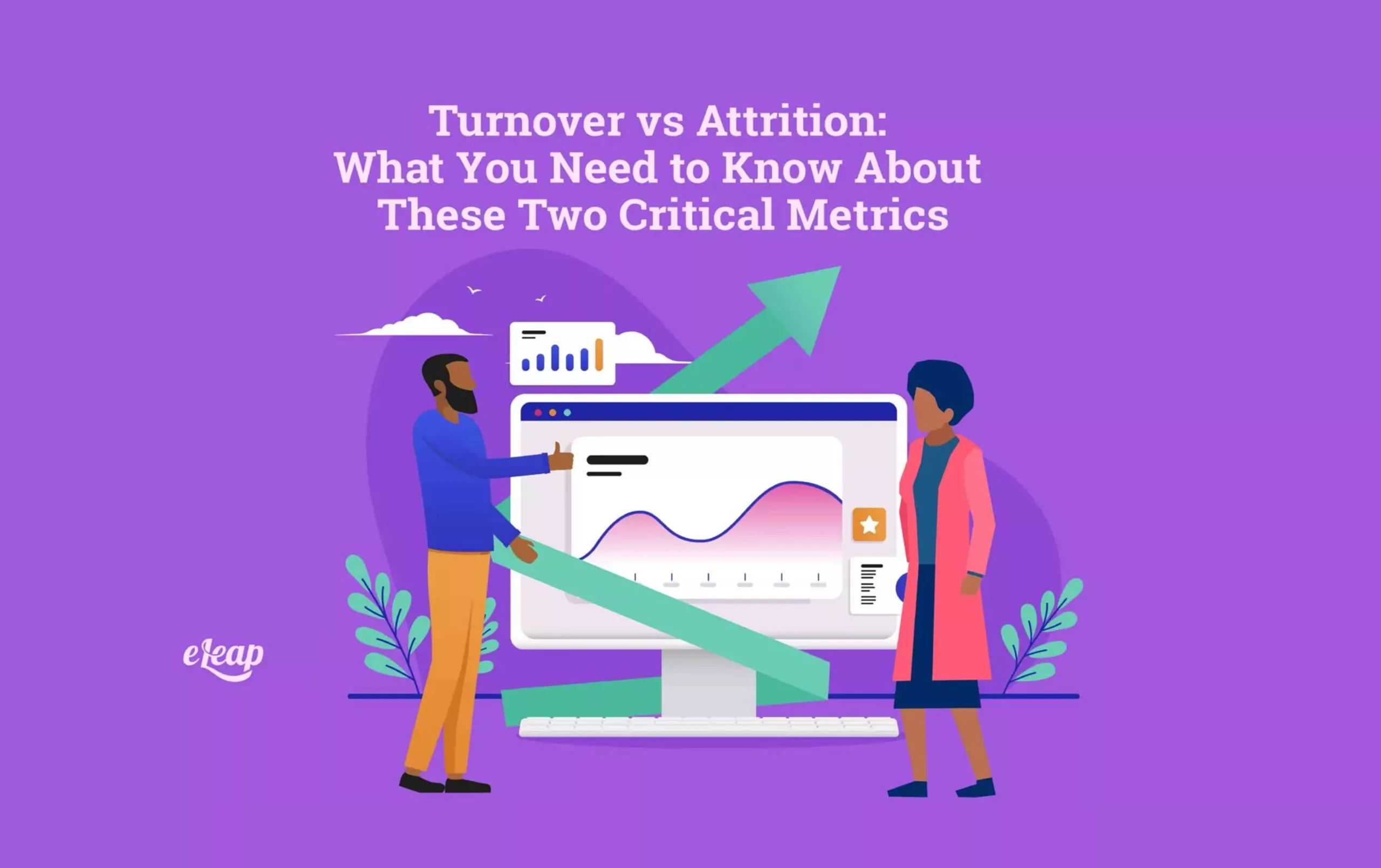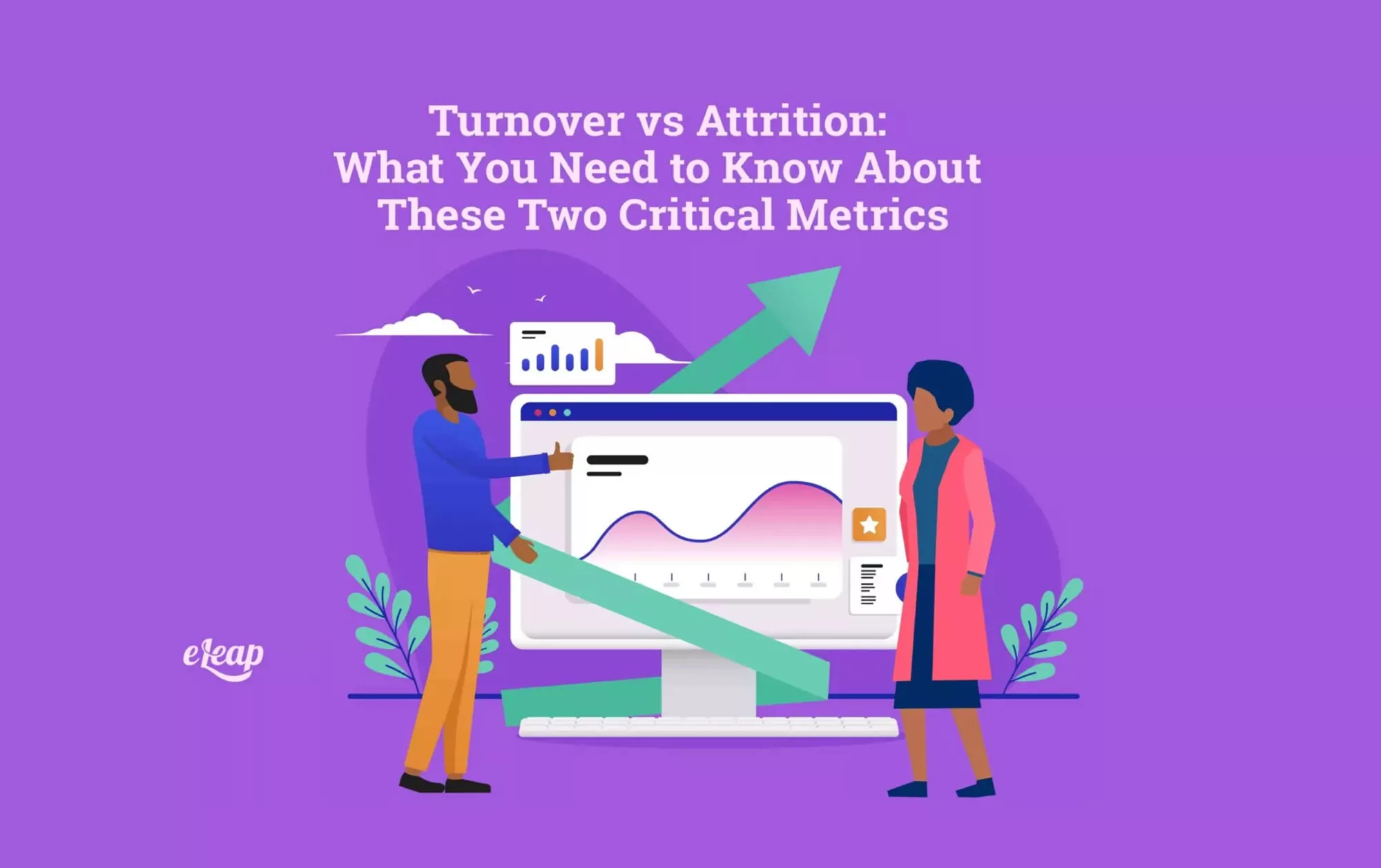Turnover vs Attrition: What You Need to Know About These Two Critical Metrics

HR has a lot of metrics to manage, but turnover and turnover vs. attrition are perhaps two of the most important ones. Thanks to modern technology, HR data is much easier to find and monitor. And gather to help provide better access to metrics across the lifecycle of an employee, from onboarding to their leaving the company and every second in between.
Today, there are tons of sophisticated metrics and analytics tools out there that are changing the discussion for many in HR and other areas of the business. However, no matter how much changes, these are two tried-and-true metrics every HR leader is going to need to know. And knowing them includes understanding how to measure them and what each signifies, as well as how you can use the data for various business decisions.
These simple metrics are valuable for one reason. According to experts: they can show the company’s transformation over a period of time. They offer similar insights from different perspectives. Helping companies to approach their employee lifecycles based on how they rate at any given time. Of course, the important part of the discussion is how turnover and Turnover vs. Attrition are different and how you can capitalize on each to make a more successful employee culture.
Turnover vs. Attrition: They’re Leaving, But Why?
Understanding these two elements, as well as where your employee culture stands, starts by knowing the “why” of the situation. For example, if people are mainly retiring or even resigning but not being replaced. It could mean that you should consider things like knowledge transfer because the positions aren’t being replaced. On the other hand. High turnover for a company could mean that there’s work that needs to be done.
Read on to learn about each metric and what it means for your company. As well as how you can course-correct and address the possible issues (regarding turnover, anyway).
Turnover
This is the rate of employees leaving the company voluntarily or involuntarily that are going to be replaced. It’s fairly easy to calculate turnover once you understand which employees are included. Simply look at the departures within the period that you want to measure, and divide that by your total average employee count. And then multiply it by 100. That will give you a percentage that is known as your turnover rate.
This rate varies from one industry to the next, and there’s not really a “baseline” to speak of. While retail has a turnover rate closer to 60%, the tech industry only sees a turnover of around 13%. Based on the most recent studies. Therefore, as you can see, there’s no real “average” turnover to consider unless you look up what’s expected of your specific industry.
Turnover vs Attrition is usually going to indicate that a company has problems with employee engagement, leadership, a lack of growth and development, or poor hiring decisions/practices. This is all stuff that can be fixed, and it should if you are going to make the most of your employee retention and make sure that you’re not losing people unnecessarily.

Attrition
When an employee leaves of their own choosing and the role is not re-filled, that is attrition. Some people return to school, while others retire or simply leave for a new company. If it’s someone in a role that won’t be replaced, it’s attrition. Bear in mind, of course, that restructuring and layoffs aren’t “voluntary” so they need to be included with Turnover vs Attrition, not attrition.
Measuring attrition is simple. Just take the number of people who left and divide them by the total headcount of your company. Again, you’ll multiply by 100 to get a percentage. That’s your attrition rate. This could be important to help you figure out the next steps in growth and development to ensure that your lost roles don’t cause the business to suffer as a result.
Which Is More Important?
You really should keep an eye on both of these metrics. However, if you do have to pick just one, it’s best to stick with turnover than attrition. It’s easier to track attrition, but turnover is what needs attention. Turnover means something is wrong that is causing employees to leave or be excused from the company. Granted, some turnover is legitimate and not negative—such as someone leaving a role for a better position at a different company. Yes, it’s a loss for the business, but it’s not on a bad note.
Turnover costs a lot of money. Not only are companies spending thousands to recruit new employees every time someone leaves, but they have to pay the managers and HR team to find the new employees and handle the training and onboarding.
There are so many different factors that could affect your company’s turnover rates. That is why it’s critical to have the right people to sort through all of the data and learn how to improve retention and reduce turnover. Because it can point to issues with mismanagement, disengagement, and poor training and onboarding processes, this data is much more valuable to HR if it comes down to a “must-choose” situation.
How to Reduce Employee Turnover
Most companies aren’t too worried about reducing attrition – these losses are expected and necessary parts of business. It may become a concern for the future of the business if too many skilled experts leave at once, of course. But that’s easy to avoid by upskilling and having people ready to fill positions or take on additional duties as needed.
On the other hand, reducing turnover is a big sticking point for several HR teams. Lower turnover is a sign of a happier employee base, a better company culture, and a more engaged group of employees. There is a lot that you can do to reduce turnover and improve your employee retention.
Some of the best tips to keep in mind include:
- Start encouraging retention from the beginning. Even in the job listing, you should talk about the long-term nature of the role and how your company promotes growth and development from within to ensure that retention remains high but people still have room to move.
- Hire the right talent the first time. Companies that have less-than-successful hiring practices in place could be seeing high turnover just because they’re hiring the wrong people and they don’t even realize it. Take the time to define roles so that you hire who you need, no matter what role you’re filling.
- Create and share a clear, dedicated career path that includes opportunities for future growth and development. When people see that you have a plan for the position, they will feel more secure in sticking around. If, on the other hand, you’re hiring for a role that is new and you haven’t really defined it yet. It will be harder to find the right fit, and it might take a few tries.
These are just a few strategies to keep in mind. It’s all about showing employees how valued they are and how much they’ll love your company culture.
Turnover + Engagement = Success
The issue in measuring turnover and attrition is that they are past-measured metrics. That is, they aren’t measured until after the fact. If 20 people leave your business in a year that need to be replaced, and you have 100 employees total, that’s a 20% turnover rate. But that’s 20% too late. Utilizing the metrics of turnover to help increase engagement. On the other hand, it will ensure that companies can use engagement surveys to gather actionable information.
The best way to use your turnover metrics is to consider the different angles involved. For example, were certain management styles in place during periods of high turnover? Were bad hiring practices used? It’s about more than just figuring out how many people left. It’s about figuring out why they left so that you can fix the problem(s).
When you add engagement surveys to the equation, you will find several actionable insights. Were high-turnover teams experiencing a lot of loss for a certain reason? What criteria caused lower engagement scores and affected turnover? It’s all about using the data together to come up with the best solutions.
Essentially, employers need to stay on the pulse of the engagement and employee culture to ensure that employees don’t leave. This will improve turnover and help you identify retention issues.
A Proactive Approach Is Better
With today’s selection of people management software. You can stay ahead of the losses and ensure that you can reduce turnover as much as possible. It’s not something that any company can eliminate. But it can be avoided in many instances or at least become a case. Where people don’t leave unless they’re retiring, moving onto a better position, etc.
Take advantage of the tools out there to monitor engagement, performance reviews, and career development so that you can give your organization a competitive edge when it comes to keeping top industry talent on your payroll. Being able to react in real-time can impact turnover rates, and that’s a win for any business today.